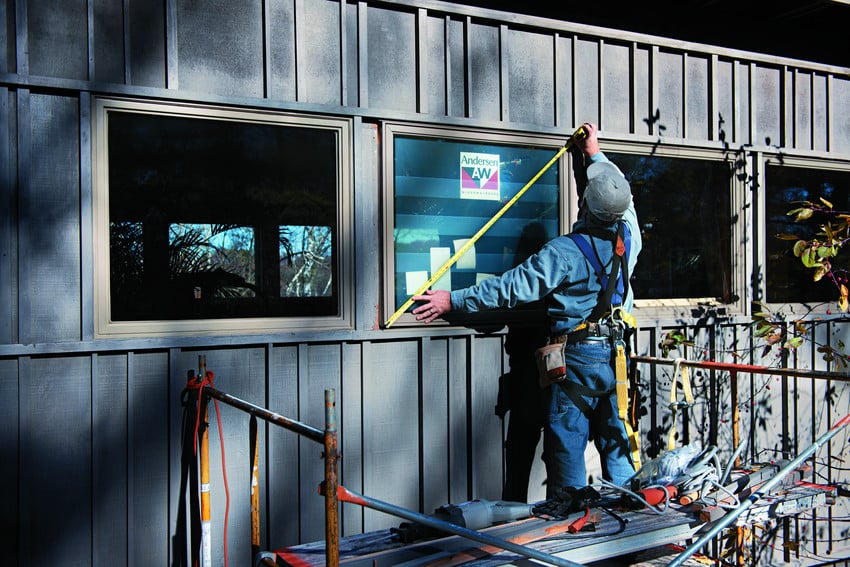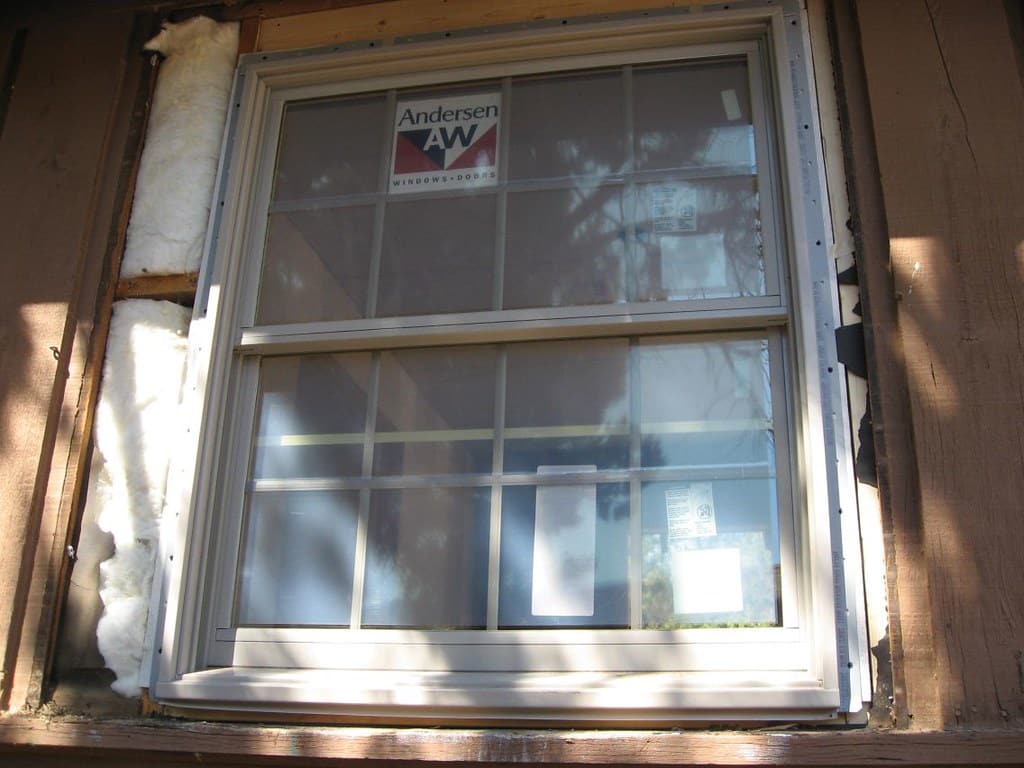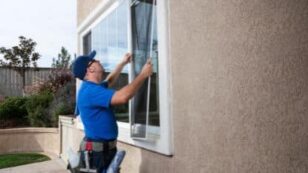

Standard Window Sizes: Homeowners Guide (2024)
If you’re looking to replace windows in your home, this guide will help you answer
- What are standard window sizes?
- Which window size do you need?
- How to ensure you get a window that will fit in your existing wall opening?
Each product and or company featured here has been independently selected by the writer. You can learn more about our review methodology here. If you make a purchase using the links included, we may earn commission.
Windows have been around for thousands of years, but until recently, they were all made to custom fit the home in which they were to be installed. Today, property owners enjoy a wide selection of “standard window sizes,” which means you’ll typically have plenty of options for replacing an old window in your home without worrying if the new window will fit.
As manufacturers started mass-producing window frames and glass materials in the mid-1900s, it became beneficial to develop standard window sizes. Stricter building codes developed at that time also helped standardize window size.
Today, standard windows make it simple to replace existing windows. Some of the top window companies — including Pella and Andersen — manufacture a myriad of different types of window styles in standard sizes. These include single-hung windows, double-hung windows, casement windows, picture windows, bay windows and more.
What Are Standard Window Sizes?
Standard window sizes are common dimensions for windows made widely available from a variety of manufacturers and home improvement stores, like Home Depot. Standardized sizing exists both to make mass production possible, which reduces the price of windows, and to make replacing windows simpler without having to order custom sizes.
The alternative to choosing standard window sizes is ordering custom sizes, which are far more expensive and challenging to find. Standard windows make new construction simpler and more affordable.
There is a wide variety of window sizes considered standard for each style of window. The window measurements appear in a four-digit code, with the first two digits representing the feet and inches of the window’s width, respectively. The last two digits represent the feet and inches of the window’s height, respectively.
Below are a few examples:
- A window that is 2 feet, 0 inches wide and 3 feet, 6 inches tall would have dimensions expressed as 2036
- A window that is 3 feet, 6 inches wide and 5 feet, 0 inches tall would have dimensions expressed as 3650
- A window that is 4 feet, 0 inches wide and 6 feet, 6 inches tall would have dimensions expressed as 4066
How to Read Standard Window Size (Easy 3-Step Method)
Window manufacturers all hold similar standards when producing windows, so the standard sizes available to you will be more or less universal across manufacturers. Once you have the four-digit size notation for the replacement window you’re looking at, you can use the steps below to determine what the dimensions are and what size wall opening it will fit into.
Step 1: Determine the Dimensions
With the four-digit sizing code, you can figure out the dimensions of the window. The first two numbers are the window’s width, expressed in feet and inches, and the second two numbers are the window’s height, expressed the same way. For example, a 3040 window is 3 feet and 0 inches wide and 4 feet and 0 inches tall.
Step 2: Determine What Rough Opening This Translates To
If you don’t know the size of your current window — or you’re installing a window on a home being built — you can compare the window size to the rough opening in your wall. You’ll need to subtract a half inch from each of the opening measurements to determine the window dimensions that will fit inside. This leaves ¼” of wiggle room on each side for easy installation.
Step 3: Consider the Manufacturer
It’s important to keep in mind that every manufacturer can have different window opening guidelines and measurements. While the standard practice is to subtract ½” from the width and the length, some manufacturers might size windows with more or less room for smooth installations.
Another good tip is to remember that you only need to worry about window sizing if you’re completing a DIY window replacement. Hiring a professional to handle the project will be easier on you, as they’ll concern themselves with sizing and fitting the window in appropriately. Professional installers can also re-frame the opening if needed.

Renewal by Andersen

Save $375 Off Each Window
Average cost
Pros
- Great industry reputation
- Award-winning company
- Member of US Green Building Council
- Manufactures products in-house
Cons
- No lifetime warranty
- More expensive than competition

Window World

200 Locations Nationwide
Average cost
Pros
- EnergyStar Partner
- Large service area
- Wide variety of products and services
- Great industry reputation
- Lifetime warranty
Cons
- Quality of service will depend on your area

Window Nation

9 States (75 miles from showrooms)
Average cost
Pros
- Award-winning company
- Wide variety of products and services
- Manufactures products in-house
- Custom Designs
Cons
- Installation not covered by warranty
- Limited service area
What Window Size Do You Need?
The size of the window you need depends on a few things. First, the window size required depends on what kind of window project you have. Windows for new homes should be sized based on the rough opening in the wall, while replacement windows can be sized based on the size of the window currently installed.
For either of these projects, we recommend deferring to a professional window company. A trained technician will have more experience measuring windows, fitting them in your home and sealing them to maximize energy efficiency.
If you’re comfortable measuring for a replacement window yourself, you can simply use a tape measure to get the width. Measure from the inside of the side jambs at the bottom, middle and top of the opening, and then take the smallest measurement.
For the window height, measure from the inside of the head jamb at the top of the window down to the sill. Take three measurements across the opening again, and settle on the smallest one.
Finally, you can supply your dimensions to your installation company. Some companies — like Pella — might require additional window information and measurements.

Window Sizing’s Impact on Replacement & Repair Cost
The size of the window is one of the most crucial factors in determining your installation or replacement cost. Larger windows made of equivalent materials will always come with higher material costs. Labor costs can also increase with window size, as maneuvering and lifting the window into place might require additional technicians or safety equipment.
Double-Hung Window Sizing
A double-hung window is one that has two slidable sashes — a top sash and a bottom sash — that often tilt inward for easy cleaning. These are the most common window type in the U.S., and they’re found in just about every room in the home. This makes them the best window style for DIYers.
The window size chart below includes standard double-hung window sizes and types.
| Double-Hung Window Type | Avg Width Ranges | Avg Height Ranges |
| Single Double-Hung Window | 24 to 48 inches (2 to 4 feet) | 36 to 72 inches (3 to 6 feet) |
| Double Double-Hung Window (side by side) | 54 to 102 inches (4 feet 6 inches to 8 feet 6 inches) | 36 to 72 inches (3 to 6 feet) |
| Triple Double-Hung Window (side by side) | 84 to 156 inches (7 to 13 feet) | 36 to 72 inches (3 to 6 feet) |

Standard Picture Window Sizing
A picture window is one that doesn’t have any operable sashes. Instead, it provides ample natural light for your living space and serves to beautify and break up the monotony of your home’s exterior. These windows are most common in living rooms, bedrooms and kitchens, but they can be found anywhere in the home.
The chart below includes some average picture window sizes by shape, which is one of the primary cost factors for this type of window.
| Picture Window Type | Standard Width | Standard Height |
| Standard Rectangular | 36 to 96 inches (3 to 8 feet) | 48 to 96 inches (4 to 8 feet) |
| Standard Square | 36 to 96 inches (3 to 8 feet) | 36 to 96 inches (3 to 8 feet) |
| Arched | 36 to 96 inches (3 to 8 feet) | 48 to 96 inches (4 to 8 feet) |
| Round | 24 to 48 inches in diameter (2 to 4 feet) | 24 to 48 inches in diameter (2 to 4 feet) |
Casement Window Sizing
A casement window has a moveable sash that opens outward like a book. The sash has hinges on one side and a locking mechanism on the other. This allows the property owner to pull the window shut and compress the weather stripping. This makes this the most energy-efficient style of window.
These windows are most common in living rooms and kitchens, but they can also appear in bedrooms. They’re typically seen as a part of a bay window. The chart below includes some average casement window sizes and types.
| Casement Window Type | Standard Width | Standard Height Ranges |
| Single Casement Window | 19 to 38 inches (1 foot 7 inches to 3 feet 2 inches) | 16 to 78 inches (1 foot 4 inches to 6 feet 6 inches) |
| Double Casement Window | 40 to 78 inches (3 feet 4 inches to 6 feet 6 inches) | 36 to 78 inches (3 feet to 6 feet 6 inches) |
| Triple Casement Window | 61 to 118 inches (5 feet 1 inch to 9 feet 10 inches) | 36 to 78 inches (3 feet to 6 feet 6 inches) |
| Quadruple Casement Window | 82 to 158 inches (6 feet 10 inches to 13 feet 2 inches) | 36 to 78 inches (3 feet to 6 feet 6 inches) |
| Two Casement Windows Included in a Bay Window |
48 to 120 inches (4 to 10 feet) | 36 to 78 inches (3 feet to 6 feet 6 inches) |
Bay Window Sizing
Bay windows are trapezoidal, with two side sashes that extend out from the house at an angle and one or more sashes between them that runs parallel to the exterior wall of the home. These windows are almost exclusive to living rooms, but they can appear in dining rooms and kitchens in some rare cases as well.
The chart below provides a quick look at the common bay window dimensions.
| Style of Window | Standard Width | Standard Height |
| 3-Panel Window | 42 to 54 inches (3 feet 6 inches to 4 feet 6 inches) | 36 to 78 inches (3 feet to 6 feet 6 inches) |
| 4-Panel Window | 56 to 72 inches (4 feet 8 inches to 6 feet) | 36 to 78 inches (3 feet to 6 feet 6 inches) |
| 5-Panel Window | 70 to 90 inches+ (5 feet 10 inches to 7 feet 6 inches+) | 36 to 78 inches (3 feet to 6 feet 6 inches) |
Sliding Window Sizing
As the name suggests, sliding windows have one or more operable sashes that slide laterally inside tracks to provide ventilation. These windows can be found in any room of the house, but they are, by far, most commonly used as bathroom windows and as basement windows as a point of egress.
The chart below includes some typical sizes for common sub-styles.
| Sliding Window Type | Avg Width | Avg Height |
| 2-Slider Windows | 36 to 48 inches (3 to 4 feet) | 24 to 36 inches (2 to 3 feet) |
| 3-Slider Windows | 54 to 72 inches (4 feet 6 inches to 6 feet) | 36 to 60 inches (3 to 5 feet) |
| 4-Slider Windows | 72 to 96 inches (6 to 9 feet) | 36 to 60 inches (3 to 5 feet) |
Awning Window Sizing
This style of window has a single moveable sash that is hinged on top and opens outward. The opened sash creates an awning above the window opening to protect your home’s interior from light rain while still providing ample ventilation. These are the most common type of windows used in basements.
| Awning Window Type | Avg Width | Avg Height |
| Standard Awning Window | 12 to 48 inches (1 to 4 feet) | 12 to 24 inches (1 to 2 feet) |
| Awning Transom Window | 12 to 48 inches (1 to 4 feet) | 12 to 48 inches (1 to 4 feet) |
Single-Hung Window Sizing
This style of window has one inoperable sash — usually on the top — and one operable one — usually on the bottom. These windows used to be found all throughout homes, but they have lost popularity to double-hung windows that provide more flexibility for ventilation and an easier cleaning process.
The chart below includes standard sizes for different types of this type of window.
| Single-Hung Window Type | Avg Width | Avg Height |
| Single Single-Hung Window | 24 to 48 inches (2 to 4 feet) | 36 to 72 inches (3 to 6 feet) |
| Double Single-Hung Window (side by side) | 54 to 102 inches (4 feet 6 inches to 8 feet 6 inches) | 36 to 72 inches (3 to 6 feet) |
| Triple Single-Hung Window (side by side) | 84 to 156 inches (7 to 13 feet) | 36 to 72 inches (3 to 6 feet) |
Custom Windows Vs. Standard Windows
Custom window sizes were the norm before the 1950s when mass production for windows began and building codes became more strict in the U.S.
Older homes with older windows are likely to have non-standard window sizes that require re-framing or custom window replacement. Homes built around the 1950s and after will typically have standard-sized windows that can be replaced and repaired more easily.
Standard window sizes range from just over $100 to well over $1,000. Customization for your home windows will always be more expensive, sometimes on the order of two to three times more costly. However, you’ll often have the option of buying standard window sizes directly from a home improvement store or online and completing the work yourself to save.
If you’re unsure whether your window is a standard size, or you just want the best replacement or installation possible, you can turn to a window installation company for help.
FAQ: Standard Window Sizes
The standard bedroom window size is 24 inches wide by 36 inches tall. Although this is the most likely size you’ll see in your bedrooms, it’s always a good idea to measure your windows to ensure you get the right size.
The most common window size in the U.S. is 24 inches wide by 36 inches tall. Common widths can range from 24 inches up to 96 inches, though, and heights can easily range from 36 inches up to 96 inches.
The style of the window also plays a major role in the standard window sizes. For example, a double-hung window will always be significantly smaller than a bay or bow window. Similarly, casement windows will almost always be taller than they are wide, while the opposite is true for most other styles.
The most common width for picture, double-hung and single-hung windows is 24 inches. This is likely what you’ll see for standard windows in new construction and in homes built after 1950. However, standard widths can range from 18 inches up to 96 inches, depending on the style.
A 3046 window is 3 feet wide by 4 feet 6 inches tall. The first number in this sizing code gives you the width of the window in feet — in this case, 3 feet. The second number tells you how many inches are added to that amount — in this case, 0 inches. The second two numbers tell you the same information about the height. In this case, the window is 4 feet 6 inches tall, or 54 inches tall.
More Window Guides
- How to Measure for Replacement Windows: A Complete Homeowner’s Guide for 2022
- 23 Types of Windows for Homes (Examples and Styles)
- Top 5 Best Window Replacement Companies (2022 Review)
- Energy-Efficient Windows Buying Guide (2022)
- Window Replacement Cost 2022 (Homeowner’s Guide)
- Double-Hung Windows Cost 2022: Replacement and Installation Guide

 233k
233k  41k
41k  Subscribe
Subscribe 





